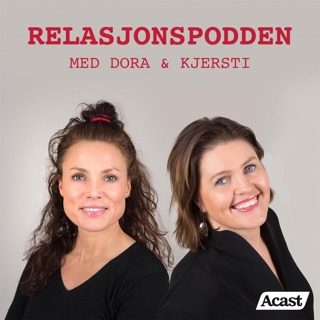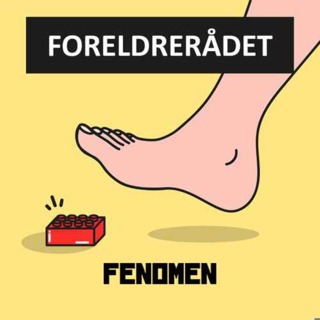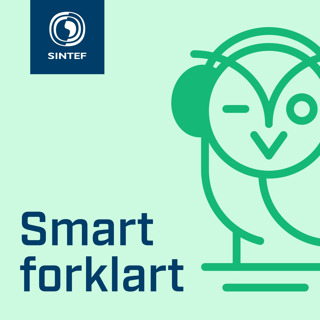
Episode 18 - Challenging Behavior From Point A to Point B
Subscribe on iTunes Subscribe on Google Play Subscribe on Stitcher Did you ever notice how hard it is to get from place to place? Is it the fact that your new location just isn't as much fun as your starting point? Is it that dawdling is its own reward? Or could it be some sort of existential crisis concerning the movement of your body through space and time as we all hurtle through space towards total entropy? This week we talk about challenging behavior around transitioning from place to place. We review a classic analysis of the function of SIB during transitions and get a glimpse into how our new computer overlords will make us all more efficient students as we move about the classroom. Invariably we wander from tangent to tangent: our favorite transition of all! Articles discussed this episode: McCord, B.E. & Thomson, R.J (2001). Functional analysis and treatment of self-injury associated with transitions. Journal of Applied Behavior Analysis, 34, 195-210. doi: 10.1901/jaba.2001.34-195 Hine, J.F., Ardoin, S.P., & Foster, T.E. (2015). Decreasing transition times in elementary school classrooms: Using computer-assisted instruction to automate intervention components. Journal of Applied Behavior Analysis, 48, 495-510. doi: 10.1002/jaba.233 Brewer, A.T., Strickland-Cohen, K., Dotson, W., & Williams, D.C. (2014). Advance notice for transition-related problem behavior: Practice guidelines. Behavior Analysis in Practice, 7, 117-125. doi:10.1007/s40617-014-0014-3 If you're interested in ordering CEs for listening to this episode, click here to go to the store page. You'll need to enter your name, BCBA #, and the two episode secret code words to complete the purchase. Email us at abainsidetrack@gmail.com for further assistance.
2 Nov 20161h 15min

Episode 18 Preview
Subscribe on iTunes Subscribe on Google Play Subscribe on Stitcher Next week we'll be discussing behavior analytic research on the topic of transitions. Moving from one place or activity to another can be a real source of challenging behavior with many individuals with autism and a real source of wasted time for any student. But why? And what can practitioners do to help? All that and errata including a fun discussion about what transitions we can't stand. Articles for next week: McCord, B.E. & Thomson, R.J (2001). Functional analysis and treatment of self-injury associated with transitions. Journal of Applied Behavior Analysis, 34, 195-210. doi: 10.1901/jaba.2001.34-195 Hine, J.F., Ardoin, S.P., & Foster, T.E. (2015). Decreasing transition times in elementary school classrooms: Using computer-assisted instruction to automate intervention components. Journal of Applied Behavior Analysis, 48, 495-510. doi: 10.1002/jaba.233 Brewer, A.T., Strickland-Cohen, K., Dotson, W., & Williams, D.C. (2014). Advance notice for transition-related problem behavior: Practice guidelines. Behavior Analysis in Practice, 7, 117-125. doi:10.1007/s40617-014-0014-3
26 Okt 201619min

BABAT Special 2016
Subscribe on iTunes Subscribe on Google Play Subscribe on Stitcher It's our super special episode at the BABAT Conference! We're recording LIVE from the top of the UMASS Amherst Student Center then saving it to go out prerecorded today. Your three hosts chat about the various goings-on during this two-day cavalcade of behavior analysis and pull in some special guests to share their own experiences at the conference. Come on and listen to the very first recorded ABA conference post-show in history! At least as far as I know of.
19 Okt 201654min

Episode 17 - (ETHICS) Ethics in Data Collection
Subscribe on iTunes Subscribe on Google Play Subscribe on Stitcher If you think you're a pro at tracking behavior, this week's episode may be a cue to reflect on just how easy it is to collect bad data. We're joined by special guest Dr. Amanda Karsten to discuss the ethics of taking good data as behavior analysts. Dr. Karsten reviews some great tips on how to go from data squirrel to data hero as well as some practical suggestions to get you using data ethically today! Plus, Diana shares a quiz to find out what kind of data you are and Jackie plugs her new ABA Christmas album. Rob sits in shock at the stark realization that he only uses data for evil. And for folks applying for continuing education credits, this episode counts towards 1 Ethics CE. Articles discussed this episode: LeBlanc, L.A., Raetz, P.B., Sellers, T.P., & Carr, J.E. (2016). A proposed model for selecting measurement procedures for the assessment and treatment of problem behavior. Behavior Analysis in Practice, 9, 77-83. doi: 10.1007/s40617-015-0063-2 Vollmer, T.R., Sloman, K.N., & St. Peter Pipkin, C. (2008). Practical implications of data reliability and treatment integrity monitoring. Behavior Analysis in Practice, 1, 4-11. Carey, M.K. & Bourret, J.C. (2014). Effects of data sampling on graphical depictions of learning. Journal of Applied Behavior Analylsis, 47, 749-764. doi: 10.1002/jaba.153 This episode provides 1 ETHICS CE. If you're interested in ordering CEs for listening to this episode, click here to go to the store page. You'll need to enter your name, BCBA #, and the two episode secret code words to complete the purchase. Email us at abainsidetrack@gmail.com for further assistance.
12 Okt 20161h 13min

Episode 17 Preview
Subscribe on iTunes Subscribe on Google Play Subscribe on Stitcher Behavior analysts collect so much data, yet we don't always think about why. Are there ethical standards which we should take into account with our data collection procedures? Dr. Amanda Karsten sure thinks so and she'll be joining us on next week's episode to provide some great tips on how to take ethical data. And in Errata we continue the debate between whether BCBAs should be more warm and fuzzy or more clinical-sounding. Plus, Mr. Rogers versus Mr. Dress Up. Articles for next week: LeBlanc, L.A., Raetz, P.B., Sellers, T.P., & Carr, J.E. (2016). A proposed model for selecting measurement procedures for the assessment and treatment of problem behavior. Behavior Analysis in Practice, 9, 77-83. doi: 10.1007/s40617-015-0063-2 Vollmer, T.R., Sloman, K.N., & St. Peter Pipkin, C. (2008). Practical implications of data reliability and treatment integrity monitoring. Behavior Analysis in Practice, 1, 4-11. Carey, M.K. & Bourret, J.C. (2014). Effects of data sampling on graphical depictions of learning. Journal of Applied Behavior Analylsis, 47, 749-764. doi: 10.1002/jaba.153
5 Okt 201618min

Episode 16 - Increasing On-Task Behavior with ADHD
Subscribe on iTunes Subscribe on Google Play Subscribe on Stitcher Since medication for ADHD isn't the only treatment in town, what behavioral interventions can help students take part in the important parts of learning? Like staying on-task with schoolwork for instance. This week we review how functional analyses, good peer models, and sounds of the cosmos can decrease off-task behavior in children. And are you a behavior analyst with no experience working with individuals with ADHD? Let our introductory summary get you started on understanding this chronic disorder. And, in the spirit of the research, we actually manage to keep our typical tangents to a minimum. Like maybe only 10% of the running time if you don't count Jackie and Rob making white-noise sound effects. Articles discussed this episode: Flood, W.A., Wilder, D.A., Flood, A.L., & Masuda, A. (2002). Peer-mediated reinforcement plus prompting as treatment for off-task behavior in children with attention deficit hyperactivity disorder. Journal of Applied Behavior Analysis, 35, 199-204. doi: 10.1901/jaba.2002.35-199 Grauvogel-MacAleese, A.N. & Wallace, M.D. (2010). Use of peer-mediated intervention in children with attention deficit hyperactivity disorder. Journal of Applied Behavior Analysis, 43, 547-551. doi: 10.1901/jaba.2010.43-547 Cook, A., Bradley-Johnson, S., & Johnson, C.M. (2014). Effects of white noise on off-task behavior and academic responding for children with ADHD. Journal of Applied Behavior Analysis, 47, 160-164. doi: 10.1002/jaba.79 And, for some background on behavioral interventions for ADHD: Fabiano, G.A., Pelham Jr., W.E., Coles, E.K., Gnagy, E.M., Chronis-Tuscano, A., & O'Connor, B.C. (2009). Clinical Psychology Review, 29, 129-140. doi: 10.1016/j.cpr.2009.11.001 If you're interested in ordering CEs for listening to this episode, click here to go to the store page. You'll need to enter your name, BCBA #, and the two episode secret code words to complete the purchase. Email us at abainsidetrack@gmail.com for further assistance.
28 Sep 20161h 17min

Episode 16 Preview
Subscribe on iTunes Subscribe on Google Play Subscribe on Stitcher ADHD is an increasingly common disability seen most regularly in public schools. How can behavior analysis help? Next week, we'll be discussing research into increasing the on-task behavior of students with ADHD as well as reviewing some facts and figures related to overall treatment. Articles for next week: Flood, W.A., Wilder, D.A., Flood, A.L., & Masuda, A. (2002). Peer-mediated reinforcement plus prompting as treatment for off-task behavior in children with attention deficit hyperactivity disorder. Journal of Applied Behavior Analysis, 35, 199-204. doi: 10.1901/jaba.2002.35-199 Grauvogel-MacAleese, A.N. & Wallace, M.D. (2010). Use of peer-mediated intervention in children with attention deficit hyperactivity disorder. Journal of Applied Behavior Analysis, 43, 547-551. doi: 10.1901/jaba.2010.43-547 Cook, A., Bradley-Johnson, S., & Johnson, C.M. (2014). Effects of white noise on off-task behavior and academic responding for children with ADHD. Journal of Applied Behavior Analysis, 47, 160-164. doi: 10.1002/jaba.79 And, for some background on behavioral interventions for ADHD: Fabiano, G.A., Pelham Jr., W.E., Coles, E.K., Gnagy, E.M., Chronis-Tuscano, A., & O'Connor, B.C. (2009). Clinical Psychology Review, 29, 129-140. doi: 10.1016/j.cpr.2009.11.001
21 Sep 201614min

Episode 15 - Technology and Safety Skills Training
Subscribe on iTunes Subscribe on Google Play Subscribe on Stitcher We all know that while behavioral skills training is a research-based method for training an individual to mastery, it can take a long time. We all know that while training videos are super-fun, they have very little impact on promoting a skill to mastery. This week we talk to Dr. Nick Vaneslow about how he mixed peanut butter and chocolate and used CBST and in situ training to teach young children safety skills. The "C" is for computer. Plus, Dr. Vaneslow tells us about his personalized cardboard cut-out, Diana learns gun-safety skills, Jackie discovers that there are more than four dangers in the world, and Rob begs everyone for a million dollars to create educational apps that save the best sound effects for choosing the wrong answers. Articles discussed this episode: Vaneslow, N.R. & Hanley, G.P. (2014). An evaluation of computerized behavioral skills training to teach safety skills to young children. Journal of Applied Behavior Analysis, 47, 51-69. doi: 10.1002/jaba.105 If you're interested in ordering CEs for listening to this episode, click here to go to the store page. You'll need to enter your name, BCBA #, and the two episode secret code words to complete the purchase. Email us at abainsidetrack@gmail.com for further assistance.
14 Sep 20161h 8min





















